A Gallery Of Patriot Flags
British Red Ensign
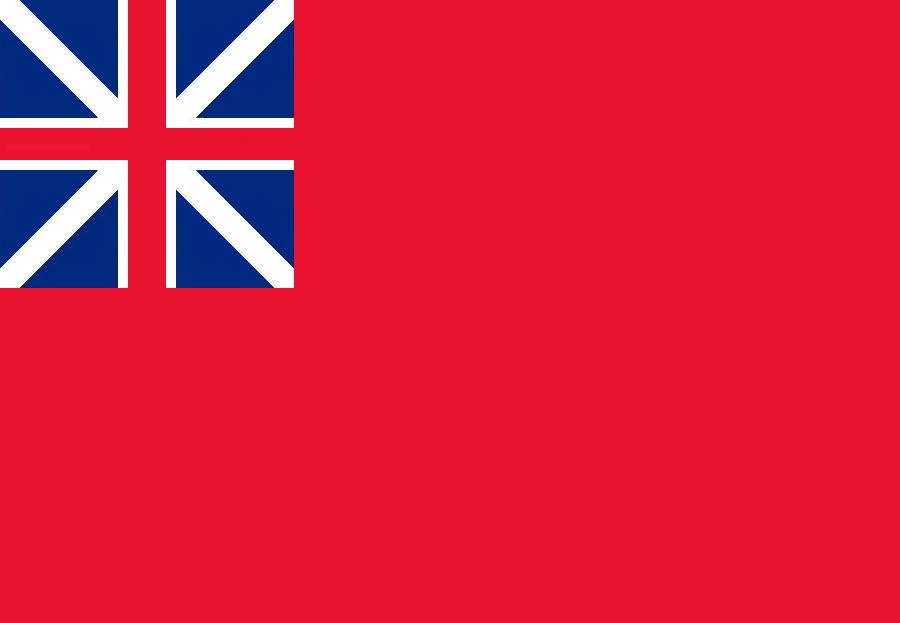

 The British Red Ensign was flown from fortifications throughout North America during the French and Indian War and up to the outbreak of the American Revolutionary War. It was created when the Kingdoms of England and Scotland became linked as a result of the assumption of the English throne by the Scottish king, James VI (variously, James I of England). One of the changes that came about by the linking of the kingdoms was the need for a flag reflecting the Union. Prior to that point the English national flag consisted of the red cross of St. George on a white background, and the Scottish national flag consisted of the diagonal white cross of St. Andrew on a blue background. The result was known as the Union Flag. On 12 April 1606, a Royal Proclamation was issued regarding the new flag. A transcription of the Proclamation was provided by Rev. J.R. Crawford in Arthur Charles Fox-Davies' book, A Complete Guide To Heraldry:
The British Red Ensign was flown from fortifications throughout North America during the French and Indian War and up to the outbreak of the American Revolutionary War. It was created when the Kingdoms of England and Scotland became linked as a result of the assumption of the English throne by the Scottish king, James VI (variously, James I of England). One of the changes that came about by the linking of the kingdoms was the need for a flag reflecting the Union. Prior to that point the English national flag consisted of the red cross of St. George on a white background, and the Scottish national flag consisted of the diagonal white cross of St. Andrew on a blue background. The result was known as the Union Flag. On 12 April 1606, a Royal Proclamation was issued regarding the new flag. A transcription of the Proclamation was provided by Rev. J.R. Crawford in Arthur Charles Fox-Davies' book, A Complete Guide To Heraldry:
By the King. “Whereas, some differences hath arisen between Our subjects of South and North Britaine travelling by Seas, about the bearing of their Flagges: For the avoiding of all contentions hereafter, Wee have, with the advice of our Councill, ordered: That from henceforth all our Subjects of this Isle and Kingdome of Great Britaine, and all our members thereof, shall beare in their main-toppe the Red Crosse, commonly called St. George’s Crosse, and the White Crosse, commonly called St. Andrew’s Crosse, joyned together according to the forme made by our heralds, and sent by Us to our Admerall to be published to our Subjects: and in their fore-toppe our Subjects of South Britaine shall weare the Red Crosse onely as they were wont, and our Subjects of North Britaine in their fore-toppe the White Crosse onely as they were accustomed."
 The Union Flag was not embraced as wholeheartedly as the king desired. The Scots were upset that the St. Andrew Cross had been placed underneath the St. George Cross.
The Union Flag was not embraced as wholeheartedly as the king desired. The Scots were upset that the St. Andrew Cross had been placed underneath the St. George Cross.
 The Union Flag was placed in the canton of an ensign that consisted of a solid red field, to become the Union Red Ensign. It was also placed in the canton of an ensign consisting of a solid blue field. A third variation consisted of a solid white field. The flags were used by different divisions of the fleet so as to identify one from another.
The Union Flag was placed in the canton of an ensign that consisted of a solid red field, to become the Union Red Ensign. It was also placed in the canton of an ensign consisting of a solid blue field. A third variation consisted of a solid white field. The flags were used by different divisions of the fleet so as to identify one from another.
 In 1634, King Charles I proclaimed that the Union Flag was to be used only on royal vessels. Many merchant vessels continued to fly the St. Andrew's or St. George's crosses. But some merchant seamen wanted to use the Union Flag also. What came about was that the merchant vessels began to use flags which were slight variations of the official Union Flag.
In 1634, King Charles I proclaimed that the Union Flag was to be used only on royal vessels. Many merchant vessels continued to fly the St. Andrew's or St. George's crosses. But some merchant seamen wanted to use the Union Flag also. What came about was that the merchant vessels began to use flags which were slight variations of the official Union Flag.
 The book, British Flags: Their Early History And Their Development At Sea, With An Account Of The Origin Of The Flag As A National Device, by William Gordon Perrin provides a transcription of a Royal Proclamation issued by King Charles II in the year 1674:
The book, British Flags: Their Early History And Their Development At Sea, With An Account Of The Origin Of The Flag As A National Device, by William Gordon Perrin provides a transcription of a Royal Proclamation issued by King Charles II in the year 1674:
Whereas by ancient usage no merchant's ship ought to bear the Jack, which is for distinction appointed for his Majesty's ships; nevertheless his Majesty is informed that divers of his Majesty's subjects have of late presumed to wear his Majesty's Jack on board their ships employed in merchants' affairs, and thinking to evade the Punishment due for the same, bear Jacks in shape and mixture of colours so little different from those of his Majesty as not to be without difficulty distinguisht therefrom, which practice is found attended with manifold Inconveniences; for prevention whereof for the future his Majesty hath thought fit, with the advice of his Privy Council, by this his Royal Proclamation, strictly to charge and command all his subjects whatsoever, that from henceforth they do not presume to wear his Majesty's Jack (commonly called The Union Jack) in any of their ships or vessels, without particular warrant for their so doing from his Majesty, or the Lord High Admiral of England, or the Commissioners for executing the office of Lord High Admiral for the time being; and his Majesty doth hereby further command all his loving subjects, that without such warrant as aforesaid, they presume not to wear on board their ships or vessels, any Jacks made in imitation of his Majesty's or any other flags Jacks, or Ensigns whatsoever, than those usually heretofore worn on merchants' ships, viz., the Flag and Jack White, with a Red Cross (commonly called Saint George's Cross) passing right through the same; and the Ensign Red, with a like Cross in a Canton White, at the upper corner thereof next to the staff.
And his Majesty doth hereby require the principal officers and Commissioners of his navy, Governors of his Forts and Castles, the Officers of his Customs, and Commanders or officers of any of his Majesty's ships, upon their meeting with, or otherwise observing any merchants' ships or vessels of his Majesty's subjects wearing such a flag, jack, or ensign, contrary hereunto, whether at Sea or in Port, not only to cause such flag, jack or ensign to be forthwith seized, but to return the names of the said ships and vessels, together with the names of their respective masters, unto the Lord High Admiral, Lords Commissioners of the Admiralty, or the Judge of the High Court of Admiralty for the time being, to the end the Persons offending may be duly punished for the same.
And his Majesty doth hereby command and enjoyn the Judge and Judges of the High Court of Admiralty, they give in charge, that strict enquiry be made of all offences in the premises, and that they cause all offenders therein to be duly punished, And all Vice Admirals and Judges of Vice Admiralties, are also to do the same, and to attend the due observation hereof, within the several Ports and Places of their respective Precincts.
Given at our Courty at Whitehall the Eighteenth Day of September 1674, in the Six and Twentieth Year of our Reign. By his Majesty's Command.
 The 1674 Proclamation basically emphasized the fact that the Union Flag was to be used only on Royal Navy ships, whereas the flag that would be acceptable for merchant vessels to fly was to be the Union Flag Red Ensign
The 1674 Proclamation basically emphasized the fact that the Union Flag was to be used only on Royal Navy ships, whereas the flag that would be acceptable for merchant vessels to fly was to be the Union Flag Red Ensign
 In 1707 the union between England and Scotland was formalized as the United Kingdom of Great Britain by Queen Anne. According to historians, one of the queen's decrees was that the Union Flag Red Ensign, the flag consisting of a solid red field with the Union Flag in the canton, now called the British Red Ensign, was to be used as the official flag for the British Navy and the commercial shippers. And it is this flag that was the official flag for the use of the British Army, thereby being flown from every fortification in North America from 1707 to 1775. The text of the First Article of the Queen's 1707 Union With England Act, in which the official flag of Great Britain is discussed follows:
In 1707 the union between England and Scotland was formalized as the United Kingdom of Great Britain by Queen Anne. According to historians, one of the queen's decrees was that the Union Flag Red Ensign, the flag consisting of a solid red field with the Union Flag in the canton, now called the British Red Ensign, was to be used as the official flag for the British Navy and the commercial shippers. And it is this flag that was the official flag for the use of the British Army, thereby being flown from every fortification in North America from 1707 to 1775. The text of the First Article of the Queen's 1707 Union With England Act, in which the official flag of Great Britain is discussed follows:
That the Two Kingdoms of Scotland and England shall upon the first day of May next ensuing the date hereof, and for ever after, be United into One Kingdom by the Name of GREAT BRITAIN; And that the Ensigns Armorial of the said United Kingdom be such as Her Majesty shall appoint, and the Crosses of St Andrew and St George be conjoined in such manner as Her Majesty shall think fit, and used in all Flags, Banners, Standards and Ensigns, both at Sea and Land.
 Queen Anne issued a separate Proclamation regarding the flag. It primarily noted that the flag, as defined by the Union Of Treaty Act, was to be flown on all ships and vessels. In practice, all fortifications on land would fly this same flag as a sign of allegiance to Great Britain. The Proclamation, as transcribed in the book, The Story Of the Union Jack, by Barlow Cumberland, follows:
Queen Anne issued a separate Proclamation regarding the flag. It primarily noted that the flag, as defined by the Union Of Treaty Act, was to be flown on all ships and vessels. In practice, all fortifications on land would fly this same flag as a sign of allegiance to Great Britain. The Proclamation, as transcribed in the book, The Story Of the Union Jack, by Barlow Cumberland, follows:
BY THE QUEEN. A Proclamation ~ Declaring what ensign or colours shall be worn at sea in merchant ships or vessels belonging to any of Her Majesty's subjects of Great Britain and, the Dominions thereunto belonging. ~ Anne R. ''Whereas, by the first article of the Treaty of Union, as the same hath been ratified and approved by several Acts of Parliament, the one made in our Parliament of England, and the other in our Parliament of Scotland, it was provided and agreed that the ensigns armorial of our Kingdom of Great Britain be such as we should appoint, and the crosses of Saint George and Saint Andrew conjoyned in such manners as we should think fit, and used in all flags, banners, standards and ensigns, both at sea and land, we have therefore thought fit, by and with the advice of our Privy Council, to order and appoint the ensign described on the side or margent hereof, to be worn on board all ships or vessels belonging to any of our subjects whatsoever, and to issue this, our Royal Proclamation, to notifie the same to all our loving subjects, hereby strictly charging and commanding the masters of all merchant ships and vessels belonging to our subjects, whether employed in our service or otherwise, and all other persons whom it may concern, to wear the said ensign on board the ships or vessels."
 Note:The flag which was flown over the fortification in the region that would become Bedford County, Pennsylvania: Fort Bedford in the late 1760s and early 1770s was the British Red Ensign. It is interesting to note that the fabric of which the red field was made consisted of a fine damask (i.e. silk fabric woven with an overall floral texture), causing it to be visually complex despite being a solid red color. A webpage devoted to the flag flown at Fort Bedford can be accessed by clicking on the following button:
Note:The flag which was flown over the fortification in the region that would become Bedford County, Pennsylvania: Fort Bedford in the late 1760s and early 1770s was the British Red Ensign. It is interesting to note that the fabric of which the red field was made consisted of a fine damask (i.e. silk fabric woven with an overall floral texture), causing it to be visually complex despite being a solid red color. A webpage devoted to the flag flown at Fort Bedford can be accessed by clicking on the following button:


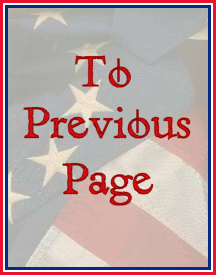
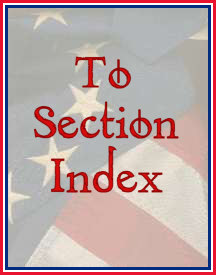
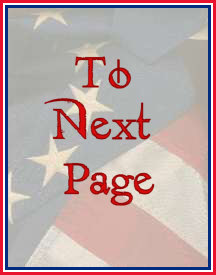
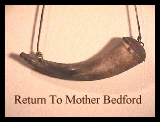




 The British Red Ensign was flown from fortifications throughout North America during the French and Indian War and up to the outbreak of the American Revolutionary War. It was created when the Kingdoms of England and Scotland became linked as a result of the assumption of the English throne by the Scottish king, James VI (variously, James I of England). One of the changes that came about by the linking of the kingdoms was the need for a flag reflecting the Union. Prior to that point the English national flag consisted of the red cross of St. George on a white background, and the Scottish national flag consisted of the diagonal white cross of St. Andrew on a blue background. The result was known as the Union Flag. On 12 April 1606, a Royal Proclamation was issued regarding the new flag. A transcription of the Proclamation was provided by Rev. J.R. Crawford in Arthur Charles Fox-Davies' book, A Complete Guide To Heraldry:
The British Red Ensign was flown from fortifications throughout North America during the French and Indian War and up to the outbreak of the American Revolutionary War. It was created when the Kingdoms of England and Scotland became linked as a result of the assumption of the English throne by the Scottish king, James VI (variously, James I of England). One of the changes that came about by the linking of the kingdoms was the need for a flag reflecting the Union. Prior to that point the English national flag consisted of the red cross of St. George on a white background, and the Scottish national flag consisted of the diagonal white cross of St. Andrew on a blue background. The result was known as the Union Flag. On 12 April 1606, a Royal Proclamation was issued regarding the new flag. A transcription of the Proclamation was provided by Rev. J.R. Crawford in Arthur Charles Fox-Davies' book, A Complete Guide To Heraldry: The Union Flag was not embraced as wholeheartedly as the king desired. The Scots were upset that the St. Andrew Cross had been placed underneath the St. George Cross.
The Union Flag was not embraced as wholeheartedly as the king desired. The Scots were upset that the St. Andrew Cross had been placed underneath the St. George Cross. The Union Flag was placed in the canton of an ensign that consisted of a solid red field, to become the Union Red Ensign. It was also placed in the canton of an ensign consisting of a solid blue field. A third variation consisted of a solid white field. The flags were used by different divisions of the fleet so as to identify one from another.
The Union Flag was placed in the canton of an ensign that consisted of a solid red field, to become the Union Red Ensign. It was also placed in the canton of an ensign consisting of a solid blue field. A third variation consisted of a solid white field. The flags were used by different divisions of the fleet so as to identify one from another. In 1634, King Charles I proclaimed that the Union Flag was to be used only on royal vessels. Many merchant vessels continued to fly the St. Andrew's or St. George's crosses. But some merchant seamen wanted to use the Union Flag also. What came about was that the merchant vessels began to use flags which were slight variations of the official Union Flag.
In 1634, King Charles I proclaimed that the Union Flag was to be used only on royal vessels. Many merchant vessels continued to fly the St. Andrew's or St. George's crosses. But some merchant seamen wanted to use the Union Flag also. What came about was that the merchant vessels began to use flags which were slight variations of the official Union Flag. The book, British Flags: Their Early History And Their Development At Sea, With An Account Of The Origin Of The Flag As A National Device, by William Gordon Perrin provides a transcription of a Royal Proclamation issued by King Charles II in the year 1674:
The book, British Flags: Their Early History And Their Development At Sea, With An Account Of The Origin Of The Flag As A National Device, by William Gordon Perrin provides a transcription of a Royal Proclamation issued by King Charles II in the year 1674: The 1674 Proclamation basically emphasized the fact that the Union Flag was to be used only on Royal Navy ships, whereas the flag that would be acceptable for merchant vessels to fly was to be the Union Flag Red Ensign
The 1674 Proclamation basically emphasized the fact that the Union Flag was to be used only on Royal Navy ships, whereas the flag that would be acceptable for merchant vessels to fly was to be the Union Flag Red Ensign In 1707 the union between England and Scotland was formalized as the United Kingdom of Great Britain by Queen Anne. According to historians, one of the queen's decrees was that the Union Flag Red Ensign, the flag consisting of a solid red field with the Union Flag in the canton, now called the British Red Ensign, was to be used as the official flag for the British Navy and the commercial shippers. And it is this flag that was the official flag for the use of the British Army, thereby being flown from every fortification in North America from 1707 to 1775. The text of the First Article of the Queen's 1707 Union With England Act, in which the official flag of Great Britain is discussed follows:
In 1707 the union between England and Scotland was formalized as the United Kingdom of Great Britain by Queen Anne. According to historians, one of the queen's decrees was that the Union Flag Red Ensign, the flag consisting of a solid red field with the Union Flag in the canton, now called the British Red Ensign, was to be used as the official flag for the British Navy and the commercial shippers. And it is this flag that was the official flag for the use of the British Army, thereby being flown from every fortification in North America from 1707 to 1775. The text of the First Article of the Queen's 1707 Union With England Act, in which the official flag of Great Britain is discussed follows: Queen Anne issued a separate Proclamation regarding the flag. It primarily noted that the flag, as defined by the Union Of Treaty Act, was to be flown on all ships and vessels. In practice, all fortifications on land would fly this same flag as a sign of allegiance to Great Britain. The Proclamation, as transcribed in the book, The Story Of the Union Jack, by Barlow Cumberland, follows:
Queen Anne issued a separate Proclamation regarding the flag. It primarily noted that the flag, as defined by the Union Of Treaty Act, was to be flown on all ships and vessels. In practice, all fortifications on land would fly this same flag as a sign of allegiance to Great Britain. The Proclamation, as transcribed in the book, The Story Of the Union Jack, by Barlow Cumberland, follows: Note:The flag which was flown over the fortification in the region that would become Bedford County, Pennsylvania: Fort Bedford in the late 1760s and early 1770s was the British Red Ensign. It is interesting to note that the fabric of which the red field was made consisted of a fine damask (i.e. silk fabric woven with an overall floral texture), causing it to be visually complex despite being a solid red color. A webpage devoted to the flag flown at Fort Bedford can be accessed by clicking on the following button:
Note:The flag which was flown over the fortification in the region that would become Bedford County, Pennsylvania: Fort Bedford in the late 1760s and early 1770s was the British Red Ensign. It is interesting to note that the fabric of which the red field was made consisted of a fine damask (i.e. silk fabric woven with an overall floral texture), causing it to be visually complex despite being a solid red color. A webpage devoted to the flag flown at Fort Bedford can be accessed by clicking on the following button: ![]()

